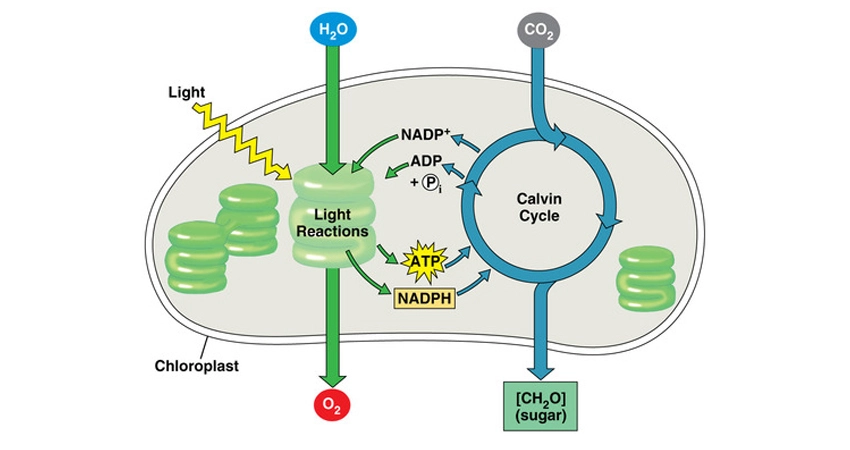Menu
Understanding A Day for Your Plants
A plant’s day is a carefully orchestrated symphony of life by nature. From the first light of dawn to the deep of night, plants go through the splendid feast of photosynthesis, interacting ingeniously with the environment and showcasing their wisdom and adaptive strategies for survival.
By accurately capturing the rhythm of this cycle, we can optimize management practices: watering in the early morning allows plants to just absorb the water needed for photosynthesis; timely fertilization is in sync with the rhythm of the plant’s nutrient absorption, avoiding the waste of resources.
Understanding a plant’s day means harmoniously blending into its growth melody and jointly creating an efficient and environmentally friendly path of green cultivation.
Let’s explore this process in detail and how to optimize the daily management of plants accordingly.
Table of Contents
Carbon Assimilation
Carbon assimilation, also known as anabolism, is a core process in the growth and development of plants. During this process, plants convert inorganic substances into organic matter through photosynthesis.
Specifically, plants use chlorophyll in the chloroplasts to absorb solar energy, breaking down water molecules into oxygen and hydrogen ions. Oxygen is released into the atmosphere, while hydrogen ions combine with carbon dioxide to form glucose.
Glucose serves as the energy source for plant growth and is also the foundation for the synthesis of other organic molecules.

The Daily Rhythm of Plants
Inquiring from our forebears, the Elders, about the art of watering, I was often told that it’s customary to irrigate in the early mornings or evenings during summertime. But why would they advocate such a practice, and what is the basis for this advice?
From my studies, research, and practical application, it has become evident that watering should ideally take place in the morning.
There’s a great deal of significance to what plants do and when they do it. Not only does this dictate the optimal time for watering, but informs the scheduling of fertilizer and pesticide applications. Furthermore, it enlightens us on the most favorable moments for various management practices throughout the day.
A Day in the Life of a Plant
This constitutes roughly 10% of the essential understanding of plant cultivation. Naturally, delving deeper reveals special cases, exceptions, and differing perspectives; however, I will proceed with the assumption of very basic and general scenarios for this article.
Using summer as the standard:
Morning (6:00 am to 8:00 am): As sunrise occurs, plants begin to slowly initiate photosynthesis, preparing for direct sunlight. They may slightly stretch at this time to maximize the surface area exposed to incoming light.
Morning to Midday (8:00 am to 12:00 pm): With intensifying sunlight, the stomata of plants gradually open, and photosynthesis enters its most efficient phase. During these hours, plants leverage ample light and suitable temperature conditions to maximize energy conversion and growth.
Noon (12:00 pm to 2:00 pm): Reaching the peak of daylight, most plants hit their maximum photosynthesis rate. However, in sweltering summers, some plants adopt a “midday siesta” strategy, temporarily closing their stomata to minimize water loss through transpiration and prevent excessive energy expenditure due to heat.
Afternoon into Evening (after 2:00 pm): As sunset approaches and light intensity wanes, photosynthesis tapers off and eventually ceases. Plants switch to their nocturnal mode, engaging in respiration (catabolism), using up glucose accumulated during the day to generate energy, facilitating growth and development, while also releasing carbon dioxide.
Plant Midday Siesta Phenomenon:
During summer days when temperatures soar above 30 degrees Celsius, plants will temporarily close their stomata at this time, halting photosynthesis.
This occurs because the energy expended by the plant on respiration surpasses that gained from conducting photosynthesis. Furthermore, if water within the plant continues to be lost through transpiration under these conditions, it can lead to harm.
When, despite it being noon—the time typically associated with peak photosynthesis—plants instead pause their photosynthetic processes, this is referred to as the midday siesta phenomenon.
Plants usually open their stomata when the sun rises and close them as night falls. However, in excessively hot, dry, or windy conditions, they may also close their stomata during the day.
Plants instinctively know that keeping stomata open under such harsh conditions risks dehydration and ultimately their survival. Thus, the strategic closure of stomata serves as a protective measure against environmental stress.
Carbon Assimilation and Dissimilation
Carbon assimilation and dissimilation are two opposing yet interdependent processes in plant growth:
Carbon Assimilation: During the day, plants convert carbon dioxide and water into glucose and oxygen through photosynthesis. This process requires light energy and therefore occurs exclusively during daylight hours.
Dissimilation: At night, with photosynthesis halted, plants break down glucose through respiration, releasing energy, while absorbing oxygen and emitting carbon dioxide. This process supports plant growth and sustains vital activities during the nighttime.
Management Strategies
Watering Timing: With consideration for the moisture needs preceding the peak period of photosynthesis, the ideal time for watering is between 7 to 8 a.m., ensuring that soil moisture is efficiently utilized during the vigorous phase of photosynthesis.
During summer’s high temperatures, to prevent rapid evaporation and root disease, watering can be shifted to the evening.
Fertilization Principles: The optimal time for fertilizing is between 8 to 9 a.m., when plants are actively engaged in photosynthesis and can swiftly absorb nutrients, fostering healthy growth.
Otherwise, fertilizing during periods of low plant uptake leads to nitrate nitrogen not adhering to the soil and consequently being lost, while ammoniacal nitrogen gets adsorbed by the soil, contributing to salt accumulation.
Guidelines for Foliar Fertilization: It should be carried out during periods when stomata are open to avoid chilling injury to plants due to a significant difference between water and air temperatures.
Additionally, attention must be paid to the stomatal openness to guarantee the effective absorption of fertilizers.
Conclusion
Grasping the daily life of a plant is tantamount to understanding the plant itself. Without knowledge of one’s plants’ physiology, even the best fertilizers cannot be effectively absorbed, resulting in stunted growth.
Understanding the routine physiological activities of plants is not only crucial for enhancing crop yield and quality but also forms the basis for implementing scientific management practices. The scheduling of tasks such as watering and fertilization should adhere to the natural physiological rhythms of plants to ensure the efficient use of resources.
The robust growth of plants hinges upon our profound understanding of their physiological characteristics and precise management, embodying a practice that is both a science and an art.
Get in touch with us!
From custom light planning, to tailored quotes, and everything in between, our team of horticulture experts are always ready to assist.




